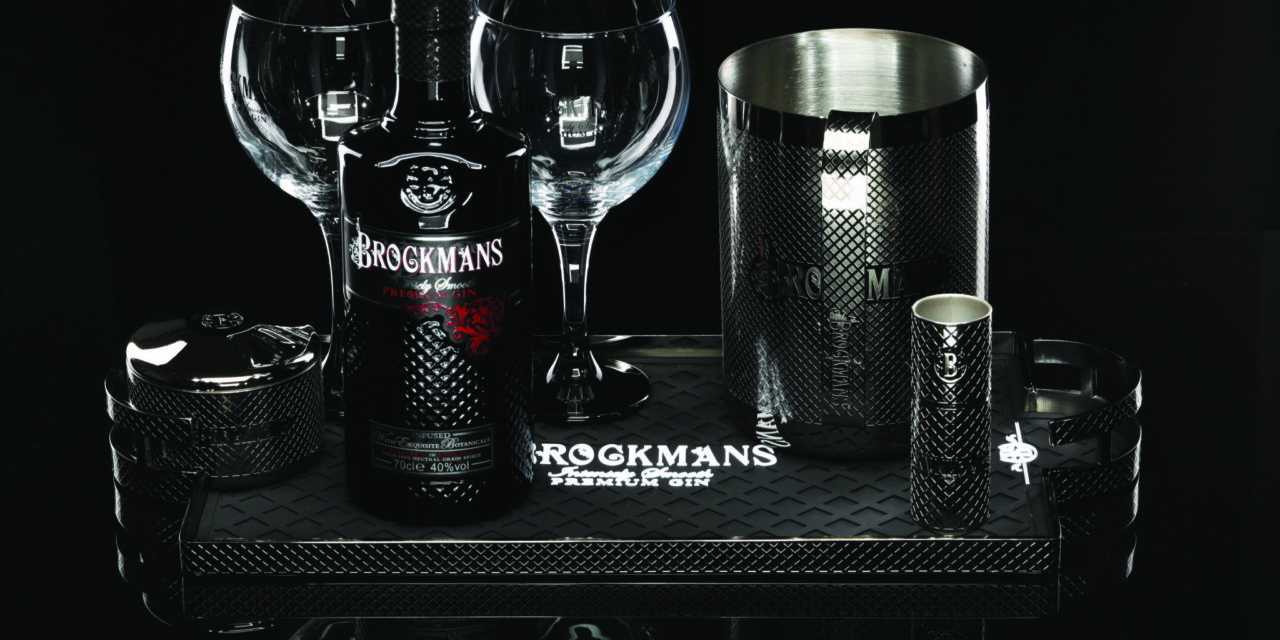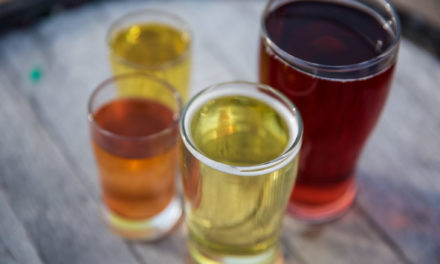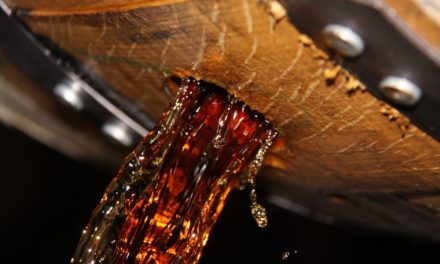“I was leaving the media preview of a very visible restaurant on the East Coast, and as I was approaching the exit I saw a lot of colorful, nicely put together medium-sized gift bags on the table,” says Tara Nurin, a beer and spirits contributor for Forbes.
“When I looked in the gift bag, there was literally one cookie in the bottom plus some literature. I thought about turning around and asking if my bag wasn’t filled, but then I thought better.”
If it sounds as if Nurin was being ungrateful—after all, she did get a cookie (and who turns their nose up at a cookie?)—she wasn’t. Promotional items, or swag, are more than just thank-you gifts. In the food and beverage industry, when a brand gives swag to journalists, influencers, importer and distributor reps, beverage managers, bartenders, and others, they do it with the intention of making a lasting impression. A pretty gift bag with one cookie does not hit that goal.
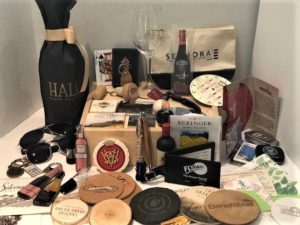
[Photo courtesy Proforma]
“Swag can be awful, like gifts picked out by distant aunts,” says Amy Bess Cook, founder of Woman-Owned Wineries, a national organization that advocates for female wine entrepreneurs. “On a good day, you run across bags that aren’t hideous.”
As long as it’s good
The word “swag” as another name for promotional products gained popularity in the 1990s, according to Merriam Webster. There are some who want to turn the word into an acronym, and there are many to choose from: “stuff we all get”; “souvenirs, wearables, and gifts”; and the jaded “So what, another gift” are among the most used. In truth, it’s based on an older, established defintion that’s similar to the word “loot” (meaning goods acquired by unlawful means).
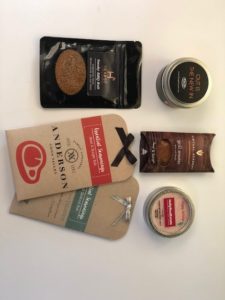
[Photo courtesy Proforma]
Not literally, of course. What they want is something of quality and useful that also makes them think well of the brand when put to use. Luckily, quality and usefulness don’t necessarily equal expensive. Sometimes, all it takes to leave a good impression is something simple.
“I love really good pens,” says Cook, who’s also a writer. “When I get a high-quality pen in my swag bag, I’m happy. I don’t need bad pens or even mediocre pens. If you’re going to crank out swag, make it worthwhile.”
Not all swag comes in bags. Sometimes a bag is the swag.
“I have a higher-end backpack with me right now,” says Nurin, who was speaking from a hotel on a media trip. “It’s my go-to press trip carry on. It has no logo on it, but I always remember who gave it to me.”
That’s the goal. Whether it’s an inexpensive-but-quality pen or a pricier high-quality backpack, the point of swag should be to make the recipient remember your brand positively.
The giver’s perspective

“We’re a gin like no other, so we try to find products that are like no other.” —Bob Fowkes, Brockmans Gin
Bob Fowkes, global marketing director and co-founder of Brockmans Gin, is responsible for choosing promotional items for the U.K.-based brand (now available in 40 countries). He chooses products that are suitable for a mixologist, which makes sense for a spirits producer.
“We have a very distinct personality as a brand,” says Fowkes. “We’re a gin like no other, so we try to find products that are like no other.”
Brockmans swag ranges from less expensive items such as bottle openers for tonic water and other premium mixers to pricier items such as cocktail shakers and quality, specialty glassware. There’s also a limited edition cocktail book celebrating the brand’s 10th anniversary that goes out to bloggers and writers.
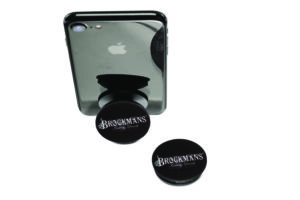
[Photo courtesy Brockmans Gin]
A Scottish mixologist recently sent him a question about the brand’s cocktail shakers. The question was, “Who do I have to kill to get one of these?”
Both on the low and the high end, Brockmans promotional products hit all the right notes: They’re quality, they’re functional, and they’re memorable.
The seller’s perspective
Those who create or customize swag have a lot of insight into what sings and what falls flat. They’re more than happy to brainstorm with a brand to find effective promotional products within a budget.
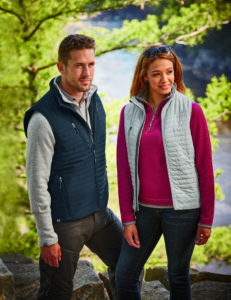
[Photo courtesy Proforma]
“People are also trying to do unique things,” she says. One of her clients is a well-known wine brand out of California, and she’s providing them with quality, useful items such as insulated copper wine tumblers that keep wine cold all day, travel speakers, and heart-shaped sunglasses to inspire Instagram photo opportunities.
For brands with smaller budgets, her suggested pieces include popsockets for mobile devices and custom playing cards. Other items that do well are custom luggage tags and spice packets with a recipe attached that’s meant to pair with a brand’s wine.
While Beauchamp creates plenty of swag items, she also specializes in marketing gifts for wine clubs. The items she creates as both brand swag and wine club gifts are of the highest quality.
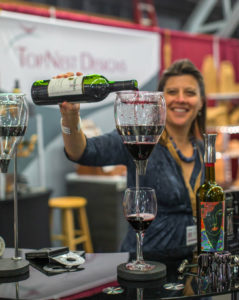
[Photo courtesy TopNest Designs]
Products that tell a story also need to be functional. One popular item is a logoed wine glass cover, called a Vino Chapeau, that’s made of pharmaceutical-grade silicone. “It keeps out the fruit flies and oxygen, thereby concentrating the aromas and making them easier to identify,” says Topper. People in the wine industry appreciate them and end up taking the covers to wine tastings where others in the industry notice them and the logo on them.
The recipient’s perspective
Usefulness varies from person to person, but everyone can recognize and appreciate quality.
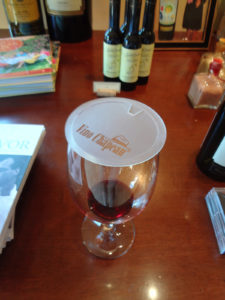
[Photo courtesy TopNest Designs]
Industry professionals are bound to appreciate high-quality items such as Nurin’s unlogoed backpack or a cocktail shaker worth killing for. Some of the smaller swag items that professionals seem to appreciate—keeping in mind that they must be quality—are wine keys and bottle openers, eyeglass cleaning rags, portable power banks, and consumables such as lip balm and chocolates.
A few things that seem to be unwanted are glassware (because no one has the room for more), cardboard coasters (because they fall apart), and beer cozies (because no one uses them).
“A good rule of thumb,” says Forbes’ Nurin, “is to think about whether the swag recipient would want to use the item if it didn’t have a logo on it.” If the answer is yes, the swag is probably singing.

